Master Baking Class with @ albertocotua ( Weekly Series) Issue no 5
Hello Steemers, this week I bring you a post related to eggs, how they are composed, how they are classified, types of eggs, etc. I hope you like it and that you continue the classes at Steemkitchen.
The Eggs.
Eggs are an important ingredient in the composition of some breads and almost all pastry products. They are given little importance to know them by their category, the correct way to conserve them, as well as the problems that bring bad handling and diseases can carry, is of great importance to the baker, the baker and everyone in general.
For us bakers it is very important to understand the handling of eggs in baking, as they are used in large quantities and are more expensive than many of the other ingredients that are used by volume, such as flour and sugar. For example, half or more of the cost of the ingredients in the average cake mix correspond to the eggs.
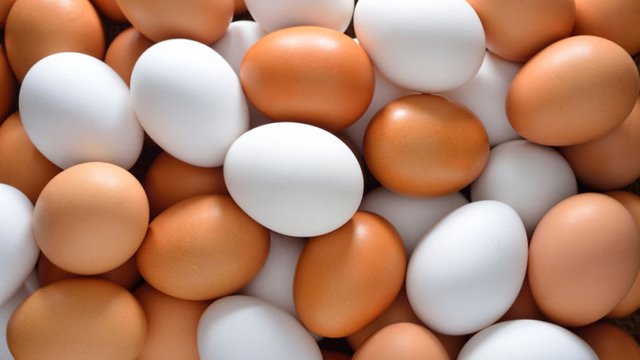
Composition of the egg.
The egg is composed of three elements: The yolk, the egg white and the shell. We will begin to break down its composition from the outside to the inside.
Shell:
Mainly formed by calcium carbonate. It has the function of protecting and isolating the egg content, maintaining its physical integrity and acting as a bacteriological barrier, it is crossed by numerous pores that form tunnels between the mineral crystals and allow gaseous exchange between the inside and the outside. The color of the shell, which can be white or brown, depends on the breed of the hen. The feeding does not influence the color of the shell (white or brown).
The whole surface of the shell, even the same pores, is covered by an organic cuticle that is formed mainly by proteins (90%) and small amounts of lipids and carbohydrates. The main function of this mucin film is to close the pores, forming a physical barrier against the penetration of microorganisms. It also prevents the loss of water and gives a bright appearance to the egg.
The membranes that line the inside of the shell are two: the internal and external testis membrane. Both surround the albumen and provide protection against bacterial penetration.
The internal membrane has a fine structure of fibers that prevent the entry of some microorganisms and delays the entry of others.
The outer membrane is much more porous and serves as a settlement for the formation of the shell.
egg white or albumen:
Is composed mainly of proteins and water. Its texture and firmness is indicative of the freshness of the egg. In the clear two parts are distinguished according to their density: the dense albumen and the fluid.
The dense albumen surrounds the yolk and is the main source of riboflavin and egg protein. The fluid albumen is the closest to the shell. When you crack a fresh egg you can see the difference between the two, because the dense surrounds the yolk and this fleet is centered on it.
The clear or albumen is basically composed of water (88%) and proteins (about 12%). The most important protein, not only in quantitative terms (54% of total protein), is ovalbumin, whose properties are of special interest both from the nutritional and culinary point of view.
In confectionery, ovalbumin is very important in the preparation of many dishes due to the gelatinous structure that it acquires when subjected to the action of heat. In the clear one is more than half of the proteins of the egg and is free of lipids. Vitamins B2 and niacin are in greater quantity in the clear than in the yolk.
In the clear are rolled filaments of albumen called "chalazas" that go from the yolk to the opposite poles of the egg, these have the function of being able to hold the yolk so that it is centered.
The clear one is transparent, although occasionally it may present some whitish "cloud" that does not suppose any problem for its consumption.
Yolk:
It is the central part of the egg, this is the nutritionally most valuable part, since it concentrates most of vitamins, lipids and minerals.
The yolk represents 33% of the total weight of an egg, it is surrounded by the vitelline membrane, which gives the yolk its shape and allows it to remain separated from the egg white or albumen. When this membrane is broken, the yolk spreads and mixes with the white one.
The solids or dry matter are distributed equally between proteins and lipids, leaving a small fraction for vitamins, minerals and carotenoids. The latter are composed of an antioxidant effect and those responsible for the yellow color, which varies in tone and intensity depending on the feeding of the hen.
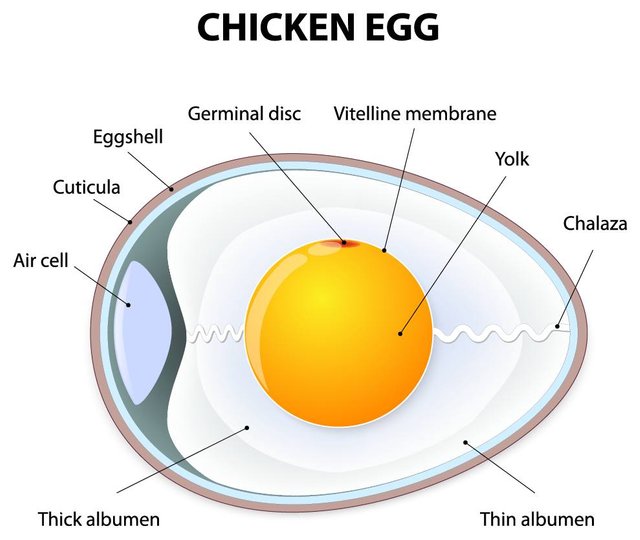
Classification and quality of an egg.
There are three types of classifications to classify chicken eggs.
- AA: must meet certain specifications, such as cleanliness and integrity of the shell, within this category the eggs are classified according to their class, which depends on their weight.
- A If the requirements of the classification AA are not met, they pass to category A.
- B are the eggs intended for industrial consumption.
When the eggs age, they become more watery and have less clarity. Bakers do not care about the firmness of the yolks, it only matters that they are clean of fresh flavor, without bad odors caused by the decomposition or absorption of strange odors. A bad-smelling egg can ruin a whole batch of breads or cakes.

How to preserve egg quality.
Proper storage is essential to preserve the quality of the eggs.
The eggs are well preserved for weeks if stored as indicated by the experts, should be stored in a dry and cool place, that does not vary in temperature and at home, the best place is the refrigerator, preferably in the egg cup, which is where it is less cold about 2 ° C (36 ° F).
The eggs quickly lose their quality if they are kept at room temperature. In fact, if we have them in a very hot bakery, in a single day they can go down in quality. For this reason it is very important to keep the eggs fresh since it does not make any sense to pay class A eggs if they are class B when it is used. It is also important to store the eggs away from other foods that can transmit unpleasant tastes or smells.
Size of the eggs.
Eggs are also classified by size. The eggs of standard size are those used in baking and confectionery. As I have taught them in past classes, we bakers use everything for their weight, so I am going to show you the weight of standard eggs without eggshells.
- A whole egg without shell: 47gr.
- An egg white 28gr.
- One egg yolk 19 gr.
Amounts of the egg parts needed to get 1kg.
- 21 whole eggs: 1kg.
- 36 egg whites: 1kg.
- 53 yolks: 1 kg.

Presentation of the eggs in the market
We have already talked about fresh eggs since they are the most common when making a cake or a bread, but here I am going to show you other presentations and their different characteristics.
Fresh eggs or eggs in the shell

Eggs in powder.
The eggs in powder are used very little in baking, the whites in powder are used to prepare for meringue. Commercial cake mixes also use powdered eggs.
Powdered eggs are incorporated in two ways:
- Reconstituted with sugar to obtain liquid eggs.
- Mixing them with dry ingredients and adding the necessary additional water to the liquid portion of the formula.
Unlike most dehydrated products, powdered eggs are not very well preserved, for this reason they should be kept in a tightly-closed container, refrigerated or frozen if their use is not going to be constant.
The eggs in powder come in the following presentations:
- Whole.
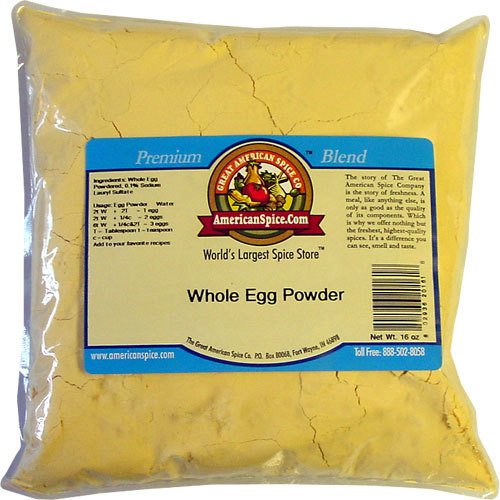
- Egg whites.
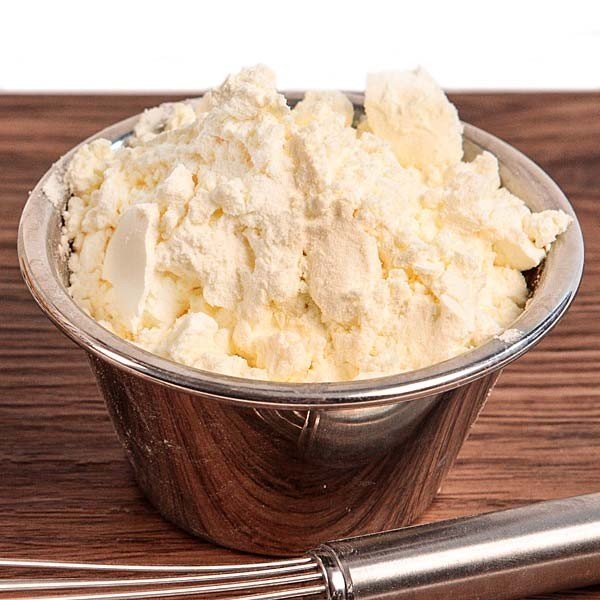
Function of eggs in baking
- The eggs fulfill an important function as it is to give structure to the bread, like the protein of the gluten, the protein of the egg coagulates with the heat, which gives structure to the loaves. This is very important in pastries due to the high content of sugar and fat weaken the gluten. If in a preparation we use eggs in large quantities, the bakery products will be hard or chewy, depending on which formula is used. Because there are formulas that balance the large amount of eggs with fats or sugars, which are softeners. An example of this is the Panettone formula.
- They have the function of emulsifying fats and liquids: As we read earlier, the yolks contain natural emulsifiers and these help us obtain smooth and smooth masses, this contributes to the volume and texture of the loaves.
- Eggs shorten gluten fibers: the natural fats contained in the yolks lubricate and shorten the gluten fibers, with this I mean that this is an important function for those products with low fat content.
- The eggs fulfill the function of hydrating: The eggs are composed mostly of water. For that reason that humidity must be calculated as part of the total liquid in a baking formula. For example, if you replace whole eggs with yolks, or use powdered eggs, you should adjust the liquid in the formula according to the moisture content of each of the products.
- Increase the nutritional value.
- The eggs give color to the bread products: the yolks give a light yellow color to the masses. In addition, as the eggs brown easily, we use the yolk to give more color to the bark.
- As we said earlier, the eggs improve the volume of the product, due to the expansion of the egg with the presence of heat.
- Depending on the number of eggs, these can improve the nutritional value of the bread.
- Thanks to the fat lecithin inside the yolk, it increases the life of the product, since it is a natural emulsifier.
Thank you very much for reading and all your support for the Steemkitchen Community.
Look out for a contest from @albertocotua to test what you have learnt so far in the world of baking.

This is posted on steemkitchen - Featuring the greatest recipes and food blogs posted by members of SteemKitchen On the STEEM Blockchain
View on Steemkitchen contact us on Discord
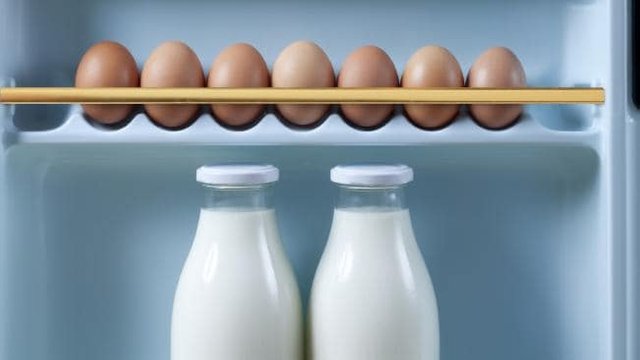
Comer huevos en Venezuela es un lujo , ya que por el alto costo nosotros los venezolanos nos hemos limitado a su compra. Feliz tarde
Eso es correcto compañero, pero el tema que le quise dar al post es sobre el uso y beneficios que le damos nosotros los panaderos. Gracias por leer.
This is a good read, I learned a lot!
Have you done any preserving of eggs in Glycerine, and testing to make sure they are still okay? This is something I am interested in for SHTF situations, and I am sure there are a lot of people who would like this same information.
I especially liked the information on dried eggs and how to use them, thank you!
No, I've never done that study.
Normally the eggs I buy are fresh and when I go to work with breads I try to buy them on the same day.
Thank you for reading.
I enjoyed the information! The actions of the eggs in the baking process is amazing. Who knew they did so much in cooked items?
Apparently in glycerine the eggs are protected from bacterial exposure, and can last 6 months with no refrigeration.
Woooow! But the eggs must be previously washed? or direct from the cardboard?
Washed from the nest.
I think they check them by putting them in water. If they are bad, they float.
:)Congratulations! Your post has been selected as a daily Steemit truffle! It is listed on rank 1 of all contributions awarded today. You can find the TOP DAILY TRUFFLE PICKS HERE.
I upvoted your contribution because to my mind your post is at least 18 SBD worth and should receive 158 votes. It's now up to the lovely Steemit community to make this come true.
I am
TrufflePig, an Artificial Intelligence Bot that helps minnows and content curators using Machine Learning. If you are curious how I select content, you can find an explanation here!Have a nice day and sincerely yours,

TrufflePigAwesome post! I love eggs! So many uses besides scrambled eggs. lol :) they also act as a leavening agent as well in baking. :)
It is correct that is another function that the eggs complete, but in the bakery the impact is less. It shows much more in the pastry.
Yes that is very true. :)